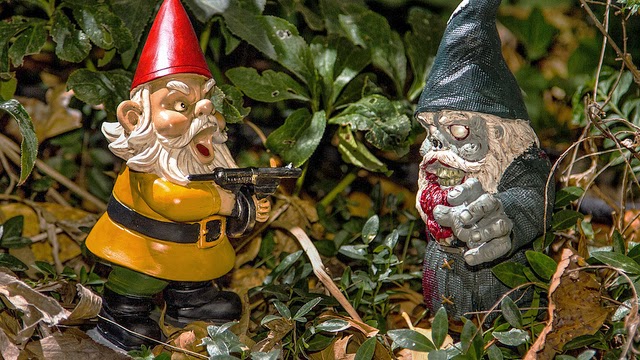This continues my post from Friday on how to create vivid characters.
How does your hero fulfill his/her need? What's his/her solution
Dexter
Dexter's problem is that he wants to kill people. Anyone. Doesn't matter who they are or what they've done. His solution, his way of living with this urge and being a productive member of society, is to kill people that not only deserve to be killed but which, by their absence, make society a better, safer, place. (As I've mentioned, Chuck Wendig doesn't agree.)
Sherlock
Sherlock Holmes hates boredom. He needs problems and puzzles. Interesting ones. He provides himself with this needed stimulation by being a consulting detective.
Walter White
Walter is a brilliant chemist who is dying and wants to leave his family provided for. His solution is to make high quality meth and sell it.
Harry Potter
Harry's need, his deepest need, is to find, or create, a family. A home. I know what I said last week, but his deep internal need is to find or forge a connection with others.
Harry's solution is to reach out and find friends, and new family, at Hogwarts. This leads to a strong desire to protect the place.
Limitations
A limitation is anything INTERNAL to a character that gets in the way of them meeting their need.
Limitations have a way of tripping up a character when they least expect it.
Buffy
Chuck Wendig uses Buffy as an example:
"Limitations are traits of the character’s that get in her way — they might be flaws or frailties but they can just as easily be positive traits that make trouble for the character and the plot. You might say that Buffy’s limitations were her age, her immaturity, and her emotional entanglements with problematic boyfriends (seriously, Buffy, what’s with the choice in dudes?)."
Excellent point.
Dexter
CW argues that Dexter's moral code was a limitation placed on his serial killer nature. I can see it that way, but, for me (as I've said) his moral code is a part of the solution to his problem, his problem being the urge, the need, to kill. For me, that's what makes Dexter a tragic figure.
I would say that Dexter's limitations were the feeling of attachment he often developed for those he needed to kill. For instance, his AA mentor, stalker and occasional girlfriend Lila Tournay.
Sherlock
Sherlock's major limitation was his ego.
In my opinion one of THE BEST episodes of Sherlock was A Scandal in Belgravia. He botches an important anti-terrorist plan of the British government because of his love of solving puzzles, because he wanted to show off.
Here's a quotation from the end of the show (SPOILER ALERT):
"Mycroft: The terrorist cells have been informed that we know about the bomb. We can't fool them now. We've lost everything. One fragment of one email. And months and years of planning. Finished.
Sherlock: Your MOD man.
Mycroft: That's all it takes. One lonely naive man, desperate to show off. And a woman clever enough to make him feel special.
Sherlock: You need to screen your defence people more carefully.
Mycroft: I'm not talking about the MOD man, Sherlock, I'm talking about you!"
Captain Malcolm 'Mal' Renolds
Although Mal can make hard calls--he is by no means a softie--he does have a heart of gold and a penchant for doing the right thing even when the result promises to be disastrous.
Harry Potter
In the muggle world Harry's magical abilities severely limit his ability to bond with the Dursleys.
In the magical world Harry's heritage, that he is the boy who lived, prevent him from just fitting in and having a normal school life. People either hate him or want him to save the world.
Greatest Fear
What does your character most fear? (This information will help you ramp up the stakes.)
Neo
Letting down those who depend on him. Not being what those he cares about think he is. Costing them their lives.
Dexter
Being outed as a serial killer. Having his sister find out.
Sherlock
Not being smart enough to figure a case out. The criminal besting him.
Having those he cares about come to harm.
Walter White
Dying without having lived.
Dying without leaving his family provided for.
Harry Potter
Living with the Dursley family forever. (Which would also be the Dursley family nightmare.)
Part of J.K. Rowling's genius was figuring out plausible ways to pack so much conflict in to the story early on.
Description
We're almost done!
Chuck Wendig wants us to do two more things. First, write a 100 word character description. He writes:
"Write a description. Keep it to 100 words. Less if you can manage ... Do not hit all the bases. Do not try to stat them up like a [...] baseball player. Listen, when you look at someone, you take away a visual thumbprint of that person — it’s pushed hard into the clay of your memory. You don’t remember every little detail or aspect."
For example: "... that woman shaped like a butternut squash with the frock that smelled like cigarettes and old terriers."
Also, here's Chuck's tip:
"... writers are best describing things that break the status quo, that violate our expectations. In other words, find the things that make the character visually unique, interesting, odd, curious – different. Cleave to those."
Describe things that violate your readers' expectations. Yes! That one's going on my wall.
Test Drive Your Character
Second, before you plunk them down into your story take your newly christened character for a test drive. Chuck Wendig writes:
"Take ‘em for a test drive. Said it before, will say it again: write a thousand-word piece of flash fiction with Your Brand New Shiny Character in the starring role. Drive him around. Ding him up. Challenge him! Force him to talk to other characters: an obstinate cab driver, a belligerent cop, a drunken orangutan. Give him a new problem or one related to the character explicitly.
"Let ‘em speak. Let ‘em act. See what they do when you get behind the wheel.
"Inhabit the character."
Wonderful advice.
Once again, here's the challenge:
- Give your character a problem to solve, something that can be wrapped up in 1,000 or so words. The problem can be one that's related to your character, or something completely different.
- Force your character to talk to other characters. I know these were only suggestions, but, well, why not? Get them to talk to an obstinant cap driver. How would your character handle that? Then throw in a beligerant cop. Or choose other characters entirely. It's up to you.
After you've written the story, your next and final step (yes, we're done!) will be to write, or rewrite, your character's logline.
Good writing!
NaNoWriMo
As I mentioned Friday, I'm doing #NaNoWriMo and, as part of that, accepted a challenge issued by a bunch of lovely lunatics to write 10,000 words over the weekend.
Well ... I did it!
It was close though. I've caught a bad cold and am squirting all sorts of fluids from all sorts of places.
Yes. It's gross.
Now, thankfully, gleefully, I'm going back to 2,000 words a day.
Photo credit: "Falknerei Schmidt" by Ben Fredericson under Creative Commons Attribution 2.0.










